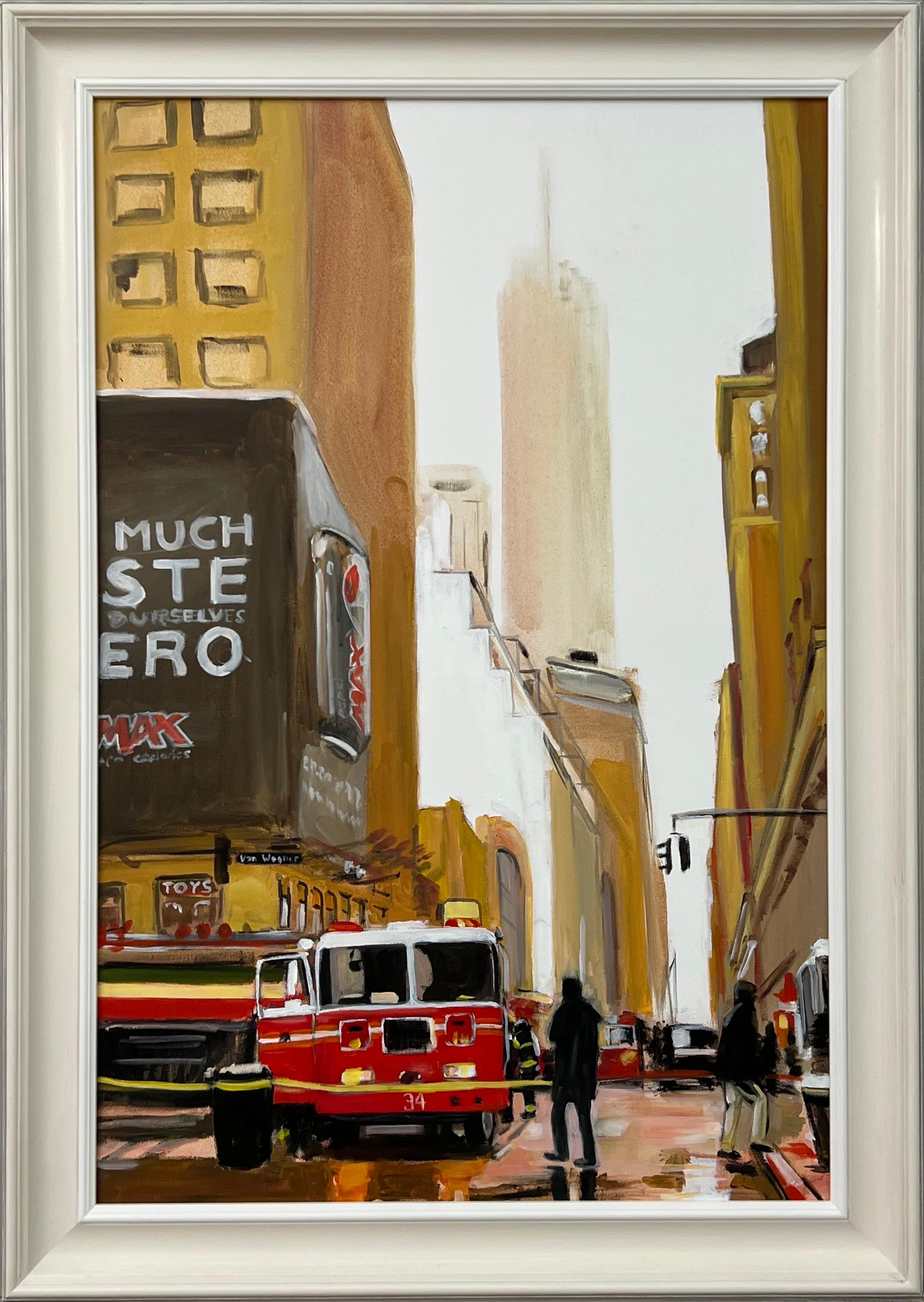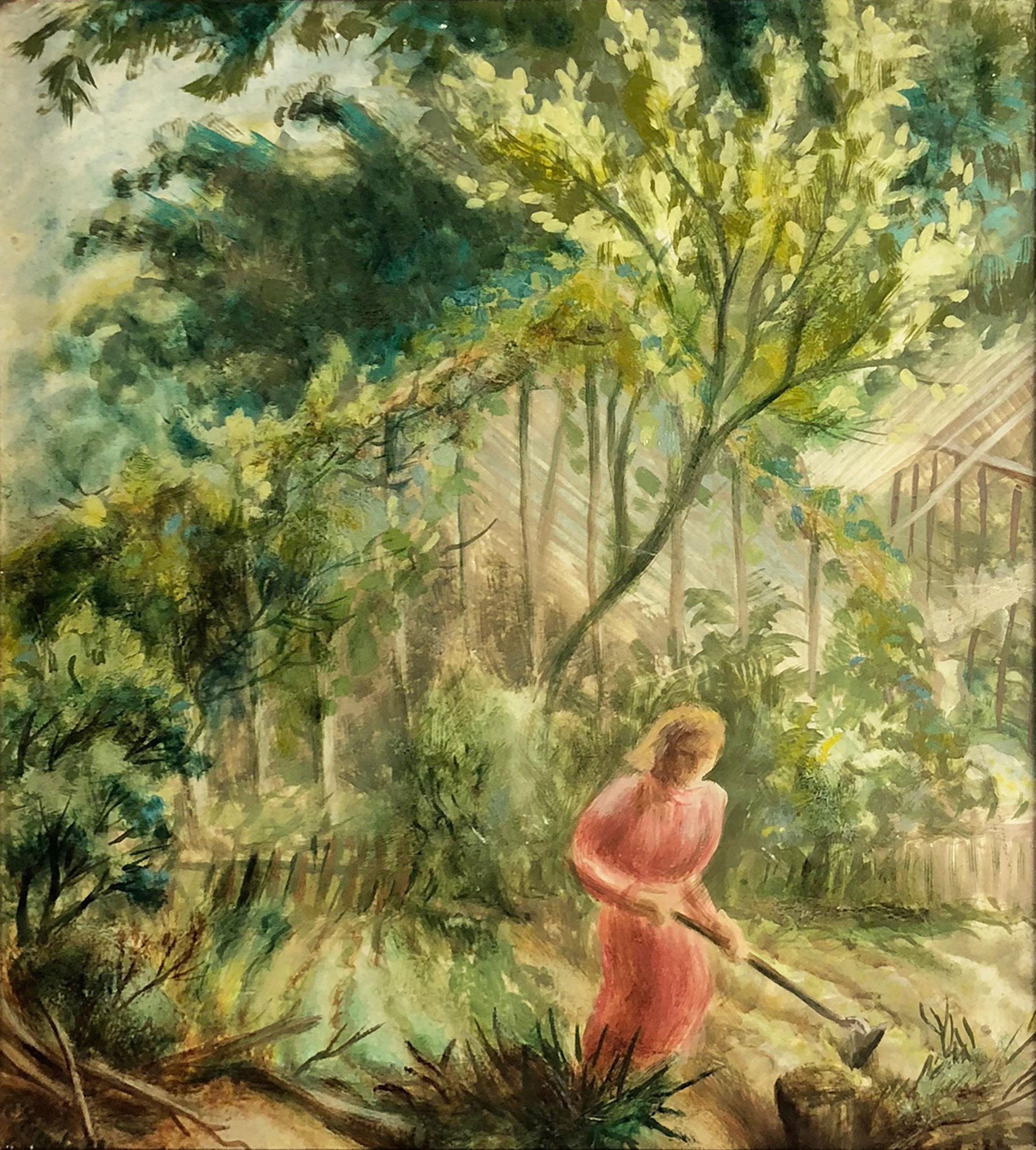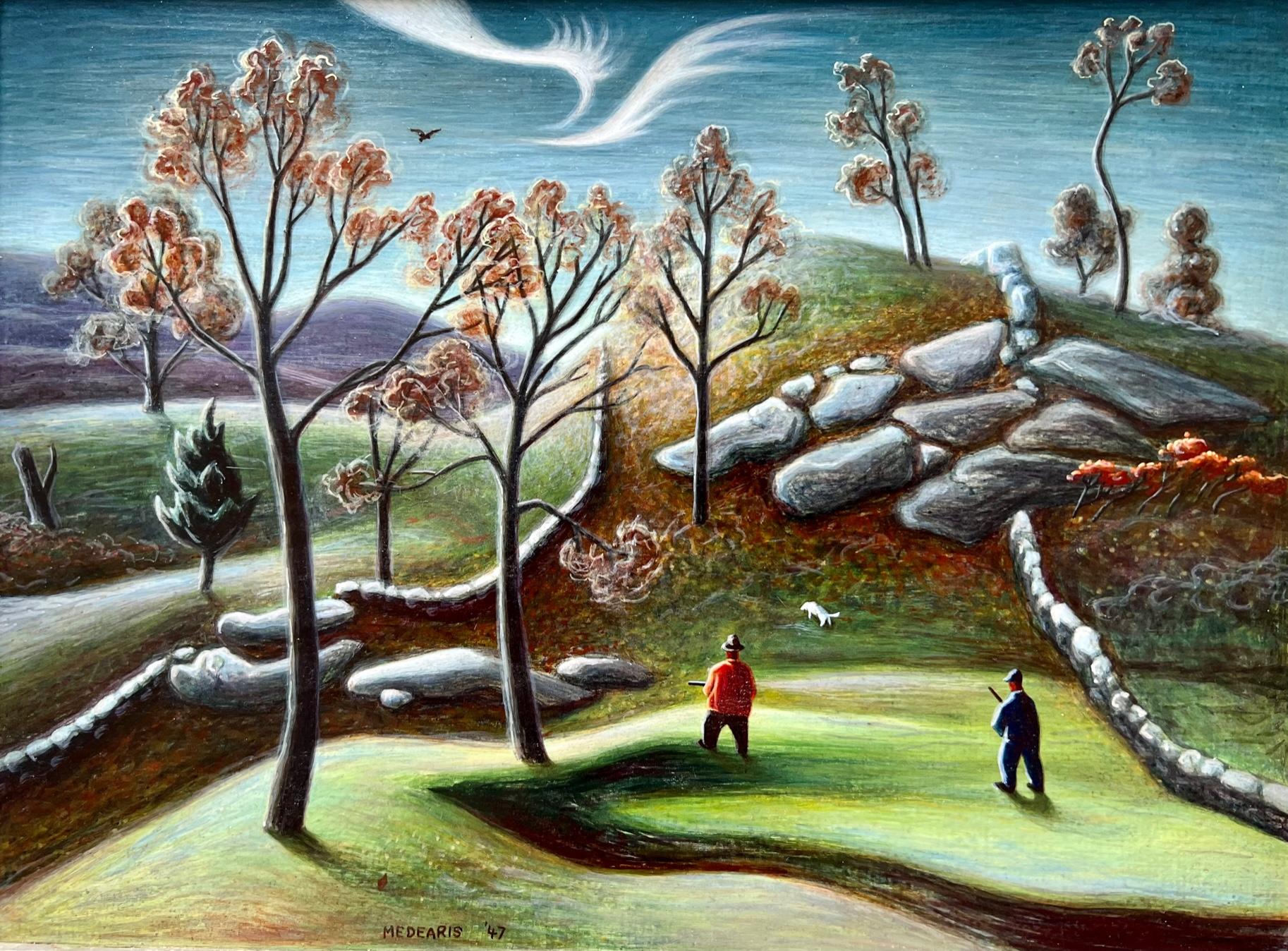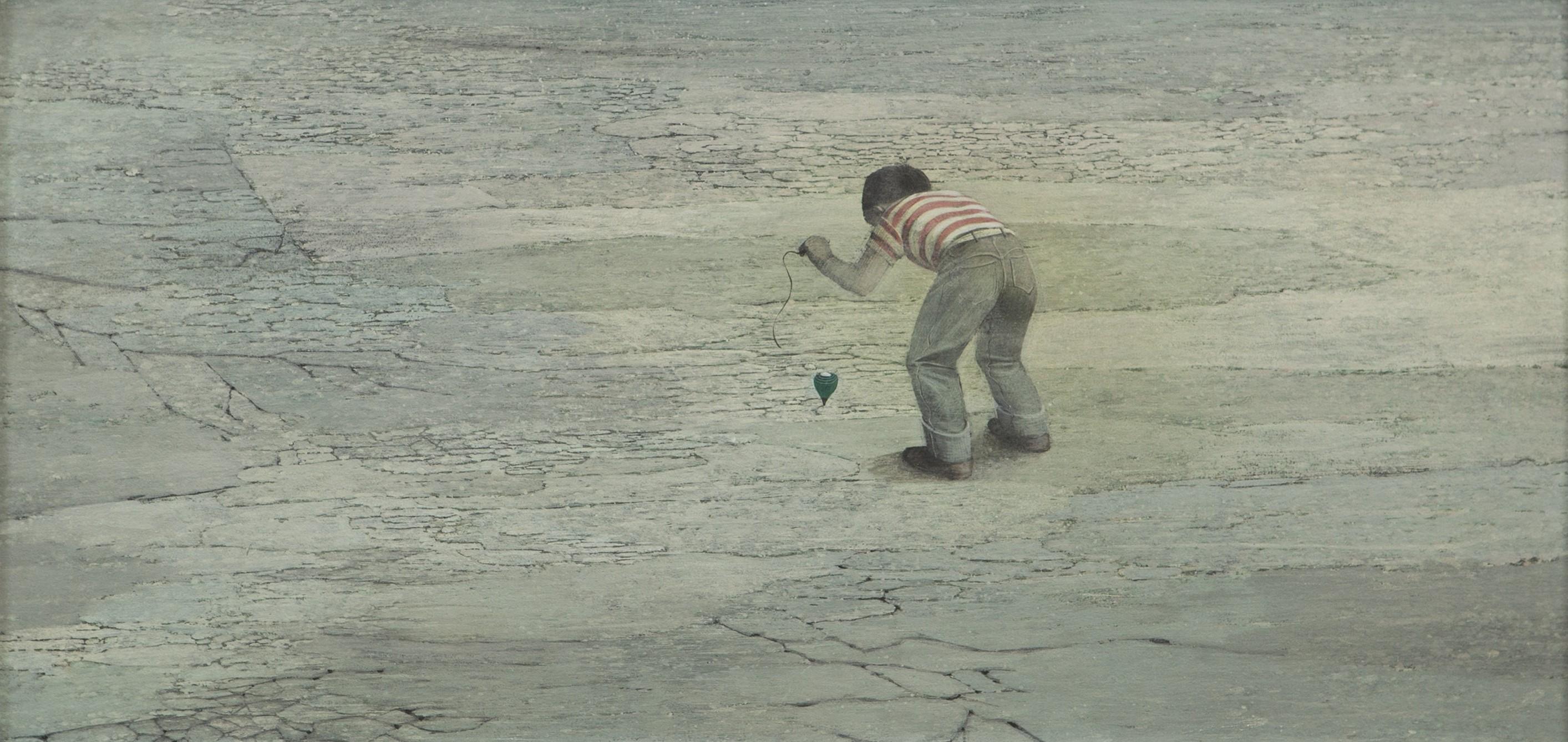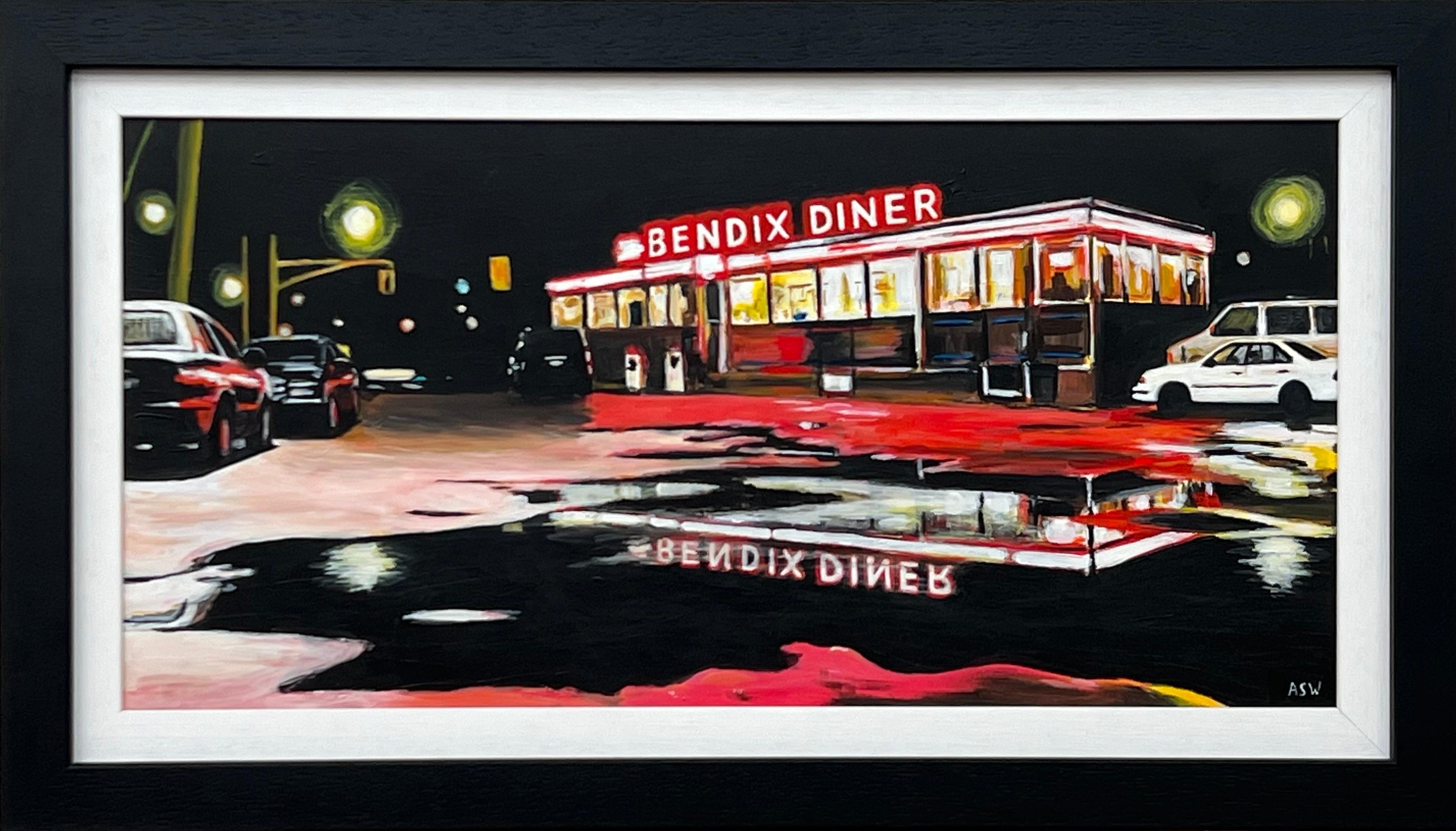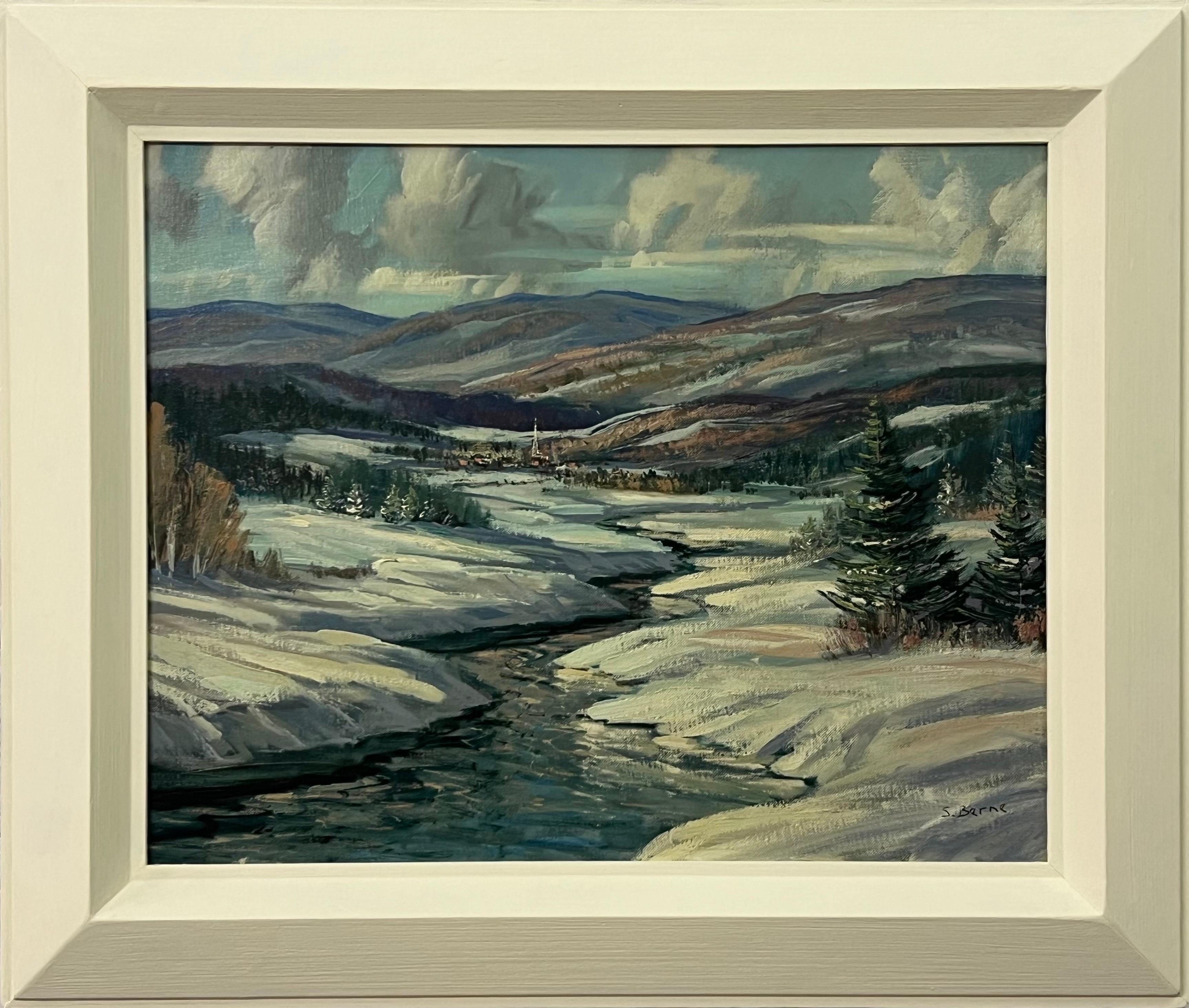Items Similar to The Lonely Road by William Charles Palmer
Want more images or videos?
Request additional images or videos from the seller
1 of 12
William Charles PalmerThe Lonely Road by William Charles Palmer1940
1940
About the Item
The Lonely Road (1940)
Tempera on panel
12" x 16"
19 1/2" x 23 1/2" x 1 1/2" framed
Hand-signed "Palmer '40" lower center.
Provenance: Midtown Galleries, New York, NY (labels verso)
Munson-Williams-Proctor Institute, Utica, NY
Exhibition history for this painting:
1940 William Rockhill Nelson Gallery (April)
1940 Cleveland Museum
1941 St. Louis Museum (January)
1941 Munson-Williams-Proctor Institute (October)
1942 Midtown Galleries War Bond Show (June)
1946 Dayton Art Institute
1954 Skidmore College (March)
1954 Crandall Library (April)
1954-1955 Board of Education circuit
1956 Munson-Williams-Proctor Institute (March)
1985 The Artists Choice Museum, NY, "Realist Forefathers" (February - March) label verso
1986 William Palmer: A Retrospective. Wichita Art Museum (February - March)
1986 William Palmer: The Early Years 1926-1940. Midtown Galleries May - June)
- Creator:William Charles Palmer (1906 - 1987)
- Creation Year:1940
- Dimensions:Height: 12 in (30.48 cm)Width: 16 in (40.64 cm)
- Medium:
- Movement & Style:
- Period:
- Condition:
- Gallery Location:Hudson, NY
- Reference Number:
About the Seller
5.0
Vetted Seller
These experienced sellers undergo a comprehensive evaluation by our team of in-house experts.
Established in 1973
1stDibs seller since 2023
5 sales on 1stDibs
Typical response time: <1 hour
- ShippingRetrieving quote...Ships From: Hudson, NY
- Return PolicyThis item cannot be returned.
More From This SellerView All
- Fish Story oil painting by Williams Charles PalmerLocated in Hudson, NYThis painting is illustrated in the Catalogue of the 1945 Encyclopedia Britannica Collection of Contemporary American Painting, p.84. Written and edited by Grace Pagano. "Painting ...Category
Mid-20th Century American Modern Figurative Paintings
MaterialsOil, Canvas
- Vienna Flower Market oil painting by Emil BarbariniLocated in Hudson, NYPainting measures 10 ½" x 16" and framed 20 ½" x 26" x 4"Category
1920s Impressionist Landscape Paintings
MaterialsPanel, Oil
- The Junkman's Serenade oil painting by Gregorio PrestopinoBy Gregorio PrestopinoLocated in Hudson, NYThis work epitomizes Prestopino's interest in social realism which captures a quiet interlude in the everyday life of an "everyman." It also provides a contrast for our expectations as we view a tough, blue collar worker, with no one watching, as he sings a melody to the birds. In an original frame measuring 49" x 39" x 3.25" Provenance: Edith Halpert's Downtown Gallery (label verso from 13 w. 113th street, where the gallery was located from 1926 until 1939) Private collection, NYC, c. 1935 By descent About this artist: Born in Little Italy in 1907, Gregorio Prestopino first set out to become a sign painter as the son of New York City immigrants. Instead, his talent provided a life-changing scholarship to the National Academy of Design, and for five years he studied drawing under C. W. Hawthorne. He spent the summer of 1934 at the MacDowell Colony in Peterborough, New Hampshire. His deep involvement with the colony led him to later serve as its director in 1954. Much of Prestopino’s work was in the vein of social realism. During the 1940s and 1950s he became deeply invested in portraying everyday Manhattan and Harlem scenes. He first became interested in the Ashcan school at the National Academy of Design, and remained committed to an interest in working with urban scenes. His lively treatment of people and events revealed his affinity for sixteenth-century artist Pieter Breughel...Category
Early 20th Century Modern Figurative Paintings
MaterialsOil, Canvas
- On the Beach modernist oil painting by Byron BrowneBy Byron BrowneLocated in Hudson, NYByron Browne On the Beach (1959) Oil on canvas, 20" x 26" 26" x 32" x 1" frame size - likely original Inscribed verso "On the Beach / 1959 / Byron Browne" Provenance: Private collection, Berkley, California About this artist: Through an oeuvre displaying the re-envisioning of figural subjects and the formation of an abstract expressionist style, Byron Browne stands out among the American abstractionists of his generation. Born in Yonkers, New York, in 1907, the artist was a bright talent at the National Academy of Design in his teens. From 1924 to 1928 Browne studied at the Academy under notable artists Robert Aitkin, Charles Courtney Curran, Charles Hawthorne, Alice Murphy...Category
Mid-20th Century Modern Figurative Paintings
MaterialsOil, Canvas
- The Magician oil and tempera painting by Julio de DiegoBy Julio de DiegoLocated in Hudson, NYJulio De Diego’s Atomic Series paintings made an extraordinary statement regarding the shock and fear that accompanied the dawn of the nuclear age. In the artist’s own words, “Scientists were working secretly to develop formidable powers taken from the mysterious depths of the earth - with the power to make the earth useless! Then, the EXPLOSION! . . . we entered the Atomic Age, and from there the neo-Atomic war begins. Explosions fell everywhere and man kept on fighting, discovering he could fight without flesh.” To execute these works, De Diego developed a technique of using tempera underpainting before applying layer upon layer of pigmented oil glazes. The result is paintings with surfaces which were described as “bonelike” in quality. The forms seem to float freely, creating a three-dimensional visual effect. In the 1954 book The Modern Renaissance in American Art, author Ralph Pearson summarizes the series as “a fantastic interpretation of a weighty theme. Perhaps it is well to let fantasy and irony appear to lighten the devastating impact. By inverse action, they may in fact increase its weight.” Exhibited 1964 Marion Koogler McNay Art Institute, San Antonio, Texas This work retains its original frame which measures 54" x 42" x 2" About this artist: Julio De Diego crafted a formidable persona within the artistic developments and political struggles of his time. The artist characterized his own work as “lyrical,” explaining, “through the years, the surrealists, the social-conscious painters and the others tried to adopt me, but I went my own way, good, bad or indifferent.” [1] His independence manifested early in life when de Diego left his parent’s home in Madrid, Spain, in adolescence following his father’s attempts to curtail his artistic aspirations. At the age of fifteen he held his first exhibition, set up within a gambling casino. He managed to acquire an apprenticeship in a studio producing scenery for Madrid’s operas, but moved from behind the curtains to the stage, trying his hand at acting and performing as an extra in the Ballet Russes’ Petrouchka with Nijinsky. He spent several years in the Spanish army, including a six-month stretch in the Rif War of 1920 in Northern Africa. His artistic career pushed ahead as he set off for Paris and became familiar with modernism’s forays into abstraction, surrealism, and cubism. The artist arrived in the U.S. in 1924 and settled in Chicago two years later. He established himself with a commission for the decoration of two chapels in St. Gregory’s Church. He also worked in fashion illustration, designed magazine covers and developed a popular laundry bag for the Hotel Sherman. De Diego began exhibiting through the Art Institute of Chicago in 1929, and participated in the annual Chicago Artists Exhibitions, Annual American Exhibitions, and International Water Color Exhibitions. He held a solo exhibition at the Art Institute of Chicago in the summer of 1935. Though the artist’s career was advancing, his family life had deteriorated. In 1932 his first marriage dissolved, and the couple’s young daughter Kiriki was sent to live with friend Paul Hoffman. De Diego continued to develop his artistic vocabulary with a growing interest in Mexican art. He traveled throughout the country acquainting himself with the works of muralists such as Carlos Merida, and also began a collection of small native artifacts...Category
1940s American Modern Abstract Paintings
MaterialsMasonite, Oil, Tempera
- St. Atomic oil and tempera painting by Julio de DiegoBy Julio de DiegoLocated in Hudson, NYJulio De Diego’s Atomic Series paintings made an extraordinary statement regarding the shock and fear that accompanied the dawn of the nuclear age. In the artist’s own words, “Scientists were working secretly to develop formidable powers taken from the mysterious depths of the earth - with the power to make the earth useless! Then, the EXPLOSION! . . . we entered the Atomic Age, and from there the neo-Atomic war begins. Explosions fell everywhere and man kept on fighting, discovering he could fight without flesh.” To execute these works, De Diego developed a technique of using tempera underpainting before applying layer upon layer of pigmented oil glazes. The result is paintings with surfaces which were described as “bonelike” in quality. The forms seem to float freely, creating a three-dimensional visual effect. In the 1954 book The Modern Renaissance in American Art, author Ralph Pearson summarizes the series as “a fantastic interpretation of a weighty theme. Perhaps it is well to let fantasy and irony appear to lighten the devastating impact. By inverse action, they may in fact increase its weight.” Exhibited 1950 University of Illinois at Urbana "Contemporary American Painting" 1964 Marion Koogler McNay Art Institute, San Antonio, Texas This work retains its original frame which measures 54" x 36" x 2". About this artist: Julio De Diego crafted a formidable persona within the artistic developments and political struggles of his time. The artist characterized his own work as “lyrical,” explaining, “through the years, the surrealists, the social-conscious painters and the others tried to adopt me, but I went my own way, good, bad or indifferent.” [1] His independence manifested early in life when de Diego left his parent’s home in Madrid, Spain, in adolescence following his father’s attempts to curtail his artistic aspirations. At the age of fifteen he held his first exhibition, set up within a gambling casino. He managed to acquire an apprenticeship in a studio producing scenery for Madrid’s operas, but moved from behind the curtains to the stage, trying his hand at acting and performing as an extra in the Ballet Russes’ Petrouchka with Nijinsky. He spent several years in the Spanish army, including a six-month stretch in the Rif War of 1920 in Northern Africa. His artistic career pushed ahead as he set off for Paris and became familiar with modernism’s forays into abstraction, surrealism, and cubism. The artist arrived in the U.S. in 1924 and settled in Chicago two years later. He established himself with a commission for the decoration of two chapels in St. Gregory’s Church. He also worked in fashion illustration, designed magazine covers and developed a popular laundry bag for the Hotel Sherman. De Diego began exhibiting through the Art Institute of Chicago in 1929, and participated in the annual Chicago Artists Exhibitions, Annual American Exhibitions, and International Water Color Exhibitions. He held a solo exhibition at the Art Institute of Chicago in the summer of 1935. Though the artist’s career was advancing, his family life had deteriorated. In 1932 his first marriage dissolved, and the couple’s young daughter Kiriki was sent to live with friend Paul Hoffman. De Diego continued to develop his artistic vocabulary with a growing interest in Mexican art. He traveled throughout the country acquainting himself with the works of muralists such as Carlos Merida, and also began a collection of small native artifacts...Category
1940s American Modern Abstract Paintings
MaterialsMasonite, Oil, Tempera
You May Also Like
- Tending the GardenBy Robert Elton TindallLocated in Missouri, MORobert Elton Tindall (1913-1983) "Tending the Garden" (Girl with a Hoe) c. 1940 Egg Tempera with Resin Oil Glazes on Panel Signed Lower Left Site: 10 x 9 inches Framed: 15 x 14 inch...Category
Mid-20th Century American Modern Figurative Paintings
MaterialsEgg Tempera, Wood Panel
- Rabbit HuntersBy Roger MedearisLocated in Los Angeles, CARabbit Hunters, egg tempera on Masonite, 12 x 9 inches, 1947, signed and dated lower left, signed, titled and dated verso “Rabbit Hunters Egg Tempera Roger Medearis 1947,” exhibited ...Category
1940s American Modern Landscape Paintings
MaterialsTempera, Board
- The Blue TopBy Robert VickreyLocated in Boston, MASigned verso: "Robert Vickrey". Titled verso: "The Blue Top". In fine condition.Category
Mid-20th Century American Modern Figurative Paintings
MaterialsCasein
- Painting of New York City Fire Department in New York City by British ArtistBy Angela WakefieldLocated in Preston, GBPainting of New York City Fire Department in New York City by Contemporary British Artist, Angela Wakefield. Art measures 36 x 24 inches Frame measures 41 x 29 inches Angela Wake...Category
2010s American Modern Landscape Paintings
MaterialsCanvas, Acrylic
- American Diner New Jersey Urban Landscape Painting Contemporary British ArtistBy Angela WakefieldLocated in Preston, GB'Bendix Diner' in New Jersey is an American Diner Painting by Leading British Urban Landscape Artist Angela Wakefield, forming part of her Americana Ser...Category
2010s American Modern Landscape Paintings
MaterialsPaint, Acrylic, Board
- Vintage Winter Snowy River Mountain Landscape of Canada by 20th Century ArtistLocated in Preston, GBVintage Winter Snowy Mountain River Landscape Oil Painting of La Rivière du Nord in Canada, by 20th Century Canadian Artist, Sydney Berne (1921-2013) Art measures 20 x 16 inches F...Category
1970s American Modern Landscape Paintings
MaterialsCanvas, Oil
